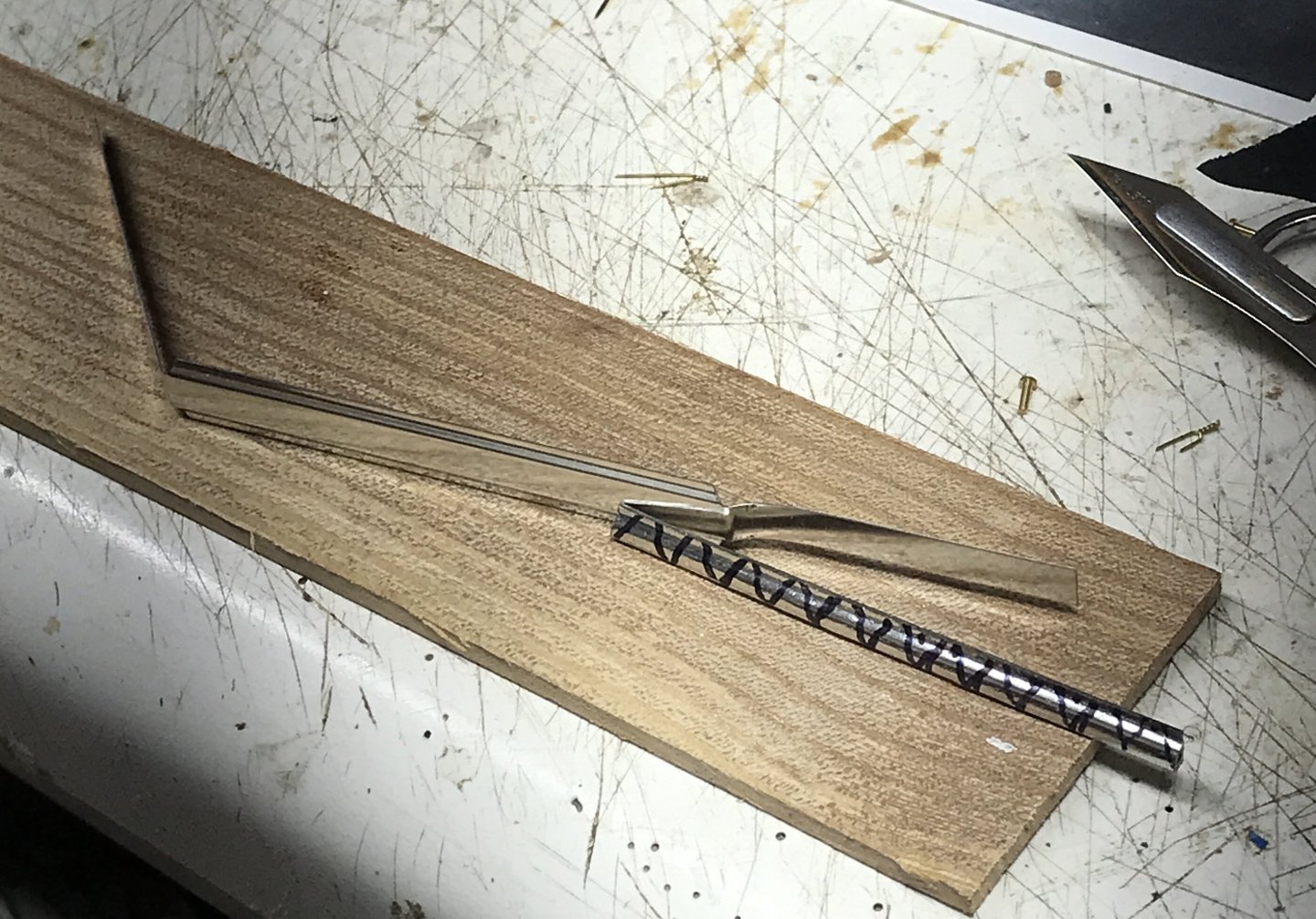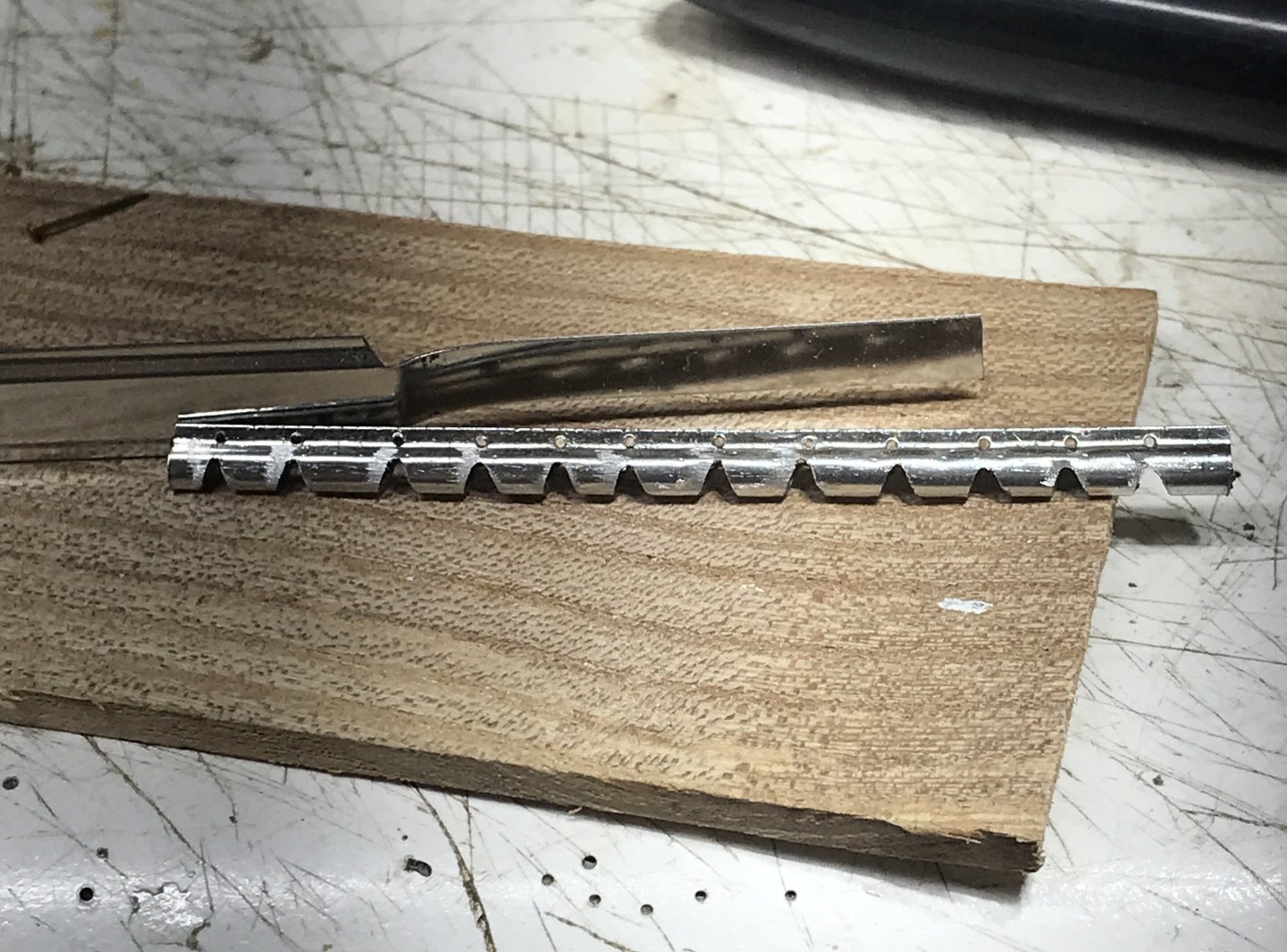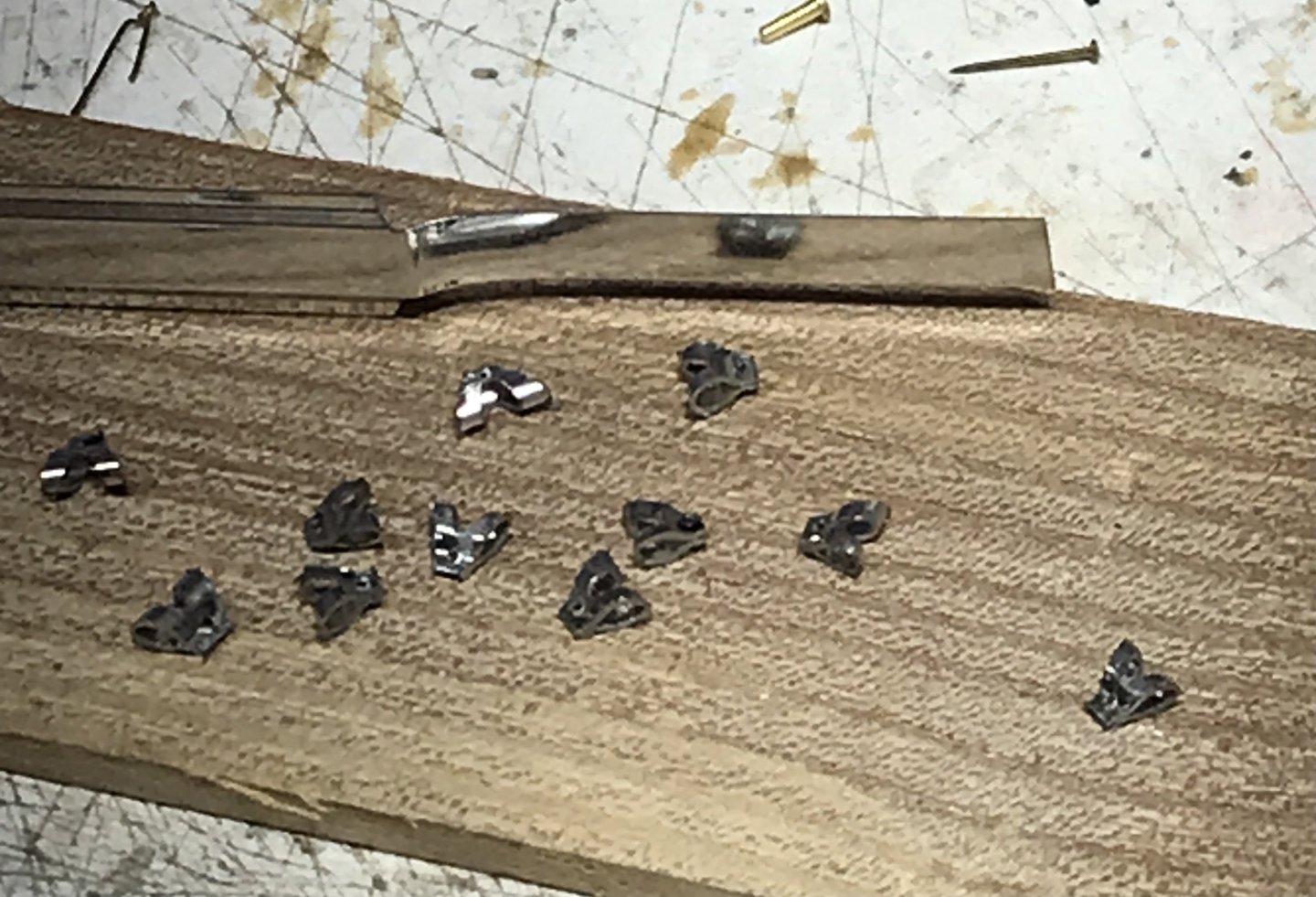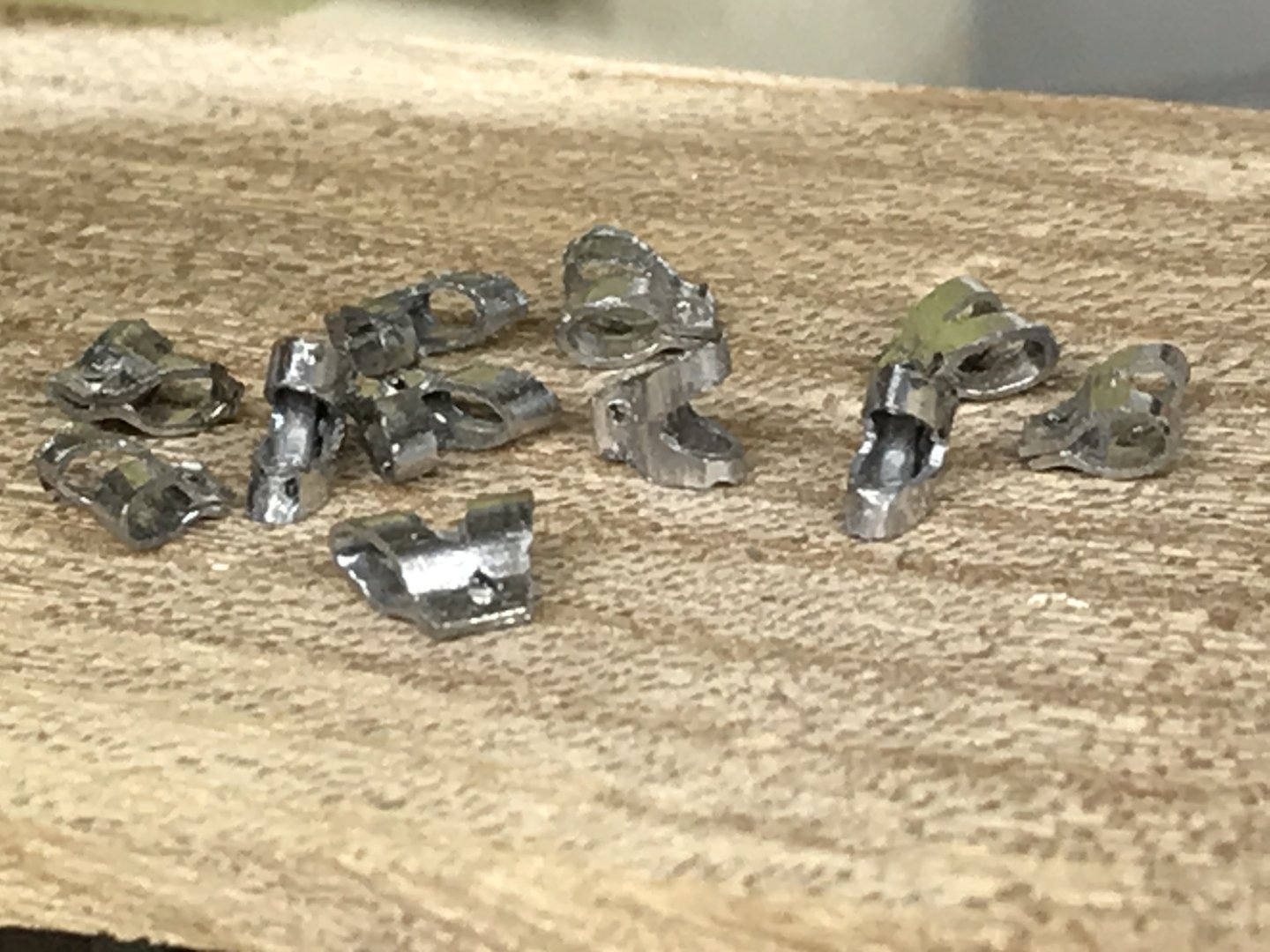-
Posts
5,512 -
Joined
-
Last visited
Content Type
Profiles
Forums
Gallery
Events
Everything posted by rwiederrich
-
I'm sure that it was.....however, when you're cold, nostalgia and pride gather close to the warmth....of the fire. Rob(Doing my bit to clear the lofting floor of shavings to reveal the truth)
- 345 replies
-
- Flying Fish
- Model Shipways
-
(and 1 more)
Tagged with:
-
That sound like it might be a monumental task. Profits are all these big model kit manufacturers are thinking about. Still, it wouldn't hurt to at least inform them of the blatant errors, they allow in their so called scale model kits. Revell didn't make any corrections to their Thermopylae kit. Not sure they even make that kit any longer. Still...the expensive wooden kits might make the change if they are concerned about accuracy. Maybe *close* is good enough?🤥 Rob
- 345 replies
-
- Flying Fish
- Model Shipways
-
(and 1 more)
Tagged with:
-
Donald McKay was a naval architect visionary. However, that seems to be limited to the clipper design. When other yards were quickly converting to steam ship building and design, McKay held his ground. The loss of several of his ships that he alone paid for, contributed to his financial failure...along with the demise of sailing vessels, outpaced by new steam ships. Webb, went on to be a very successful steam ship builder...others too. Unfortunately, McKay was a victim of his own dedication. His brilliant career did bring him great wealth and high honor. It was his stubborn lack of vision for the future of iron steam ships that brought him low. It was his own choices....not the advent of a superior vessel. Rob
- 345 replies
-
- Flying Fish
- Model Shipways
-
(and 1 more)
Tagged with:
-
I agree...I find the errors passed down to be unfortunate. It's easy to sell something to a person ignorant of that something. Rob
- 345 replies
-
- Flying Fish
- Model Shipways
-
(and 1 more)
Tagged with:
-
Exactly. McKay built Staghound completely...her masts. yards and rigging as well. And as you suggest.....most clippers used similar deck features and equipment. With that being said, however, McKay's ingenious pre-thought spilled over into deck features on his clippers. So many have been previously mentioned here and elsewhere. So to think his deck designs might be different is not outside reality. Duncan McLean's own overwhelmed remarks and acknowledgements of what a *Perfectly* provisioned vessel should look like, was expressed many times when describing a McKay vessel. His own words, such as *Ingenious, skillfully executed, masterfully provided, well equipped....only reinforces the fact, that McKay used extraordinary skill and foresight in fashioning his vessels with modern and ingenious structures. His attention to provide for his workers comfort was just as prevalent for providing for the men who would sail his vessels. One note to remember: McKay permitted his captains to be involved in rigging decisions, but he had overall control.....because the rigging design, in most cases fully effected the sailing characteristics of the hull. No matter how well the hull was designed...if coupled with inadequate, or faulty masting, yarding, or sail plans....the entire vessels performance and reputation was in jeopardy. McKay, wasn't down with that. Rob
- 345 replies
-
- Flying Fish
- Model Shipways
-
(and 1 more)
Tagged with:
-
Mike told me Chapelle had no peer review concerning his drawings and many items he includes or eliminates can be suspect. Unlike Chapelle...we cross reference and compare, historically what McKay did, or most likely did....based on his actual practices. I completely agree, Rich. Somethings fishy with this model....and Chapelle's drawing/design for it.. Rob
- 345 replies
-
- Flying Fish
- Model Shipways
-
(and 1 more)
Tagged with:
-
The Challenge has the same winches on her bits that Chapelle drew for the Staghound. Intetesting
- 345 replies
-
- Flying Fish
- Model Shipways
-
(and 1 more)
Tagged with:
-
The Challenge was a Webb designed clipper. However McKay was a clipper visionary. I would not use w Webb design to validate a McKay design. Especially when Duncan McLean describes her in such detail with having an ample, airy, well lit space for a shift of men to bunk. And no other clipper of the era had Naval Hoods either. Proof , we can not use what others did to conclude what McKay did. He worked to his own tune, setting records and building what no other designer would dare. Donald McKay’s one of a kind clipper fleet is my evidence. Just in case you wanted to know how I feel about it?🧐👍 Rob
- 345 replies
-
- Flying Fish
- Model Shipways
-
(and 1 more)
Tagged with:
-
I'm still apt to believe that the typical forecastle of British clippers was relied upon when they concluded the W/C's were to be outside the forecastle proper.....and not within as McLean describes. Full height Topgallant forecastles even drawn my Campbell...show a forward bulkhead with windows and companionways. Rob
- 345 replies
-
- Flying Fish
- Model Shipways
-
(and 1 more)
Tagged with:
-
She's looking wonderful...great job. Clean and well constructed. Rob
- 57 replies
-
- Flying Fish
- Model Shipways
-
(and 1 more)
Tagged with:
-
Well, there you go Jared. she's coming along nicely...good work. Rob
- 431 replies
-
- Flying Fish
- Model Shipways
-
(and 2 more)
Tagged with:
-
Gent’s. As far as the W/C’s go on McKay vessels….. you are missing one very large piece of the puzzle. British clippers were small clippers. C/S was only 901 tons. And so was most British clippers. American clippers were nearly twice as large, Many 2/3rds larger. They had to put their W/C’s outside their forecastles for design and space issues. Those little boats couldn’t house them along with the windless and crew. American clippers had size on their side. I feel since the C/S is the only clipper left to evaluate. Model designers simply used her arrangement as their example. Without doing real research. Rob
- 345 replies
-
- Flying Fish
- Model Shipways
-
(and 1 more)
Tagged with:
-
Indeed, I fully agree. Rich, I suspect the companionway doors had a modest step up, to prevent water from easily pouring down the passageway. 6~10 inches....this offset allows the companion way slide roofs to nearly be resting on the forecastle deck...as you have depicted in your drawing. This is similar to the example I had shown you presented on that old Thermopylae model forecastle deck... Rob
- 345 replies
-
- Flying Fish
- Model Shipways
-
(and 1 more)
Tagged with:
-
Rick, your Flying Fish is just wonderful. Clean, sharp, and very well executed. In our small groups 15 year study of McKay's final clipper, Glory of the Seas....we discovered many construction practices McKay employed in just about all of his clippers. His innovative designs were for the most part, heavily guarded secrets at the time. Rich is pointing out a simple overlooked detail, I discovered, that will make construction much easier when the time comes. We've made many of these discoveries and the intention is to pass along these observations, to aid future model builders....correct issues in plans that did not have the data we have uncovered with the great aid of our friend Michael Mjelde. Rob
- 345 replies
-
- Flying Fish
- Model Shipways
-
(and 1 more)
Tagged with:
-
Well, well Rick. Interesting... I retired from Denturism over 10 years ago myself. I did notice a few hand instruments on your desk....that gave me a clue. Now I can see clearly as to where you got your attention to detail skills. I've been a dental lab tech for over 45 years and a Denturist for over 20, till I retired. We share much in common. Rob
- 345 replies
-
- Flying Fish
- Model Shipways
-
(and 1 more)
Tagged with:
-
Rich I just took about Two hours to finish reading your article. Wow! So much information and discovery. Great read. Thanks for the many kudos and also referencing Vlad’s wonderful build as well. A third article would do his build justice…… Good idea. It would be something if through this article a museum would materialize. 😏 Thanks again my friend. Great job. Rob
-
Started working on the metal sheet blocks. I’m following the same method I used for Glory of the Seas. I used metal record tabs. Bent them in half to form the block body. Marked and cut them. But first I drilled all the mounting holes on the mill. Here are some pics of the process. Short but sweet. Next, I’ll mount them on the yards when I get to that point and paint the entire thing then. Each block is 1/8” wide. Rob
About us
Modelshipworld - Advancing Ship Modeling through Research
SSL Secured
Your security is important for us so this Website is SSL-Secured
NRG Mailing Address
Nautical Research Guild
237 South Lincoln Street
Westmont IL, 60559-1917
Model Ship World ® and the MSW logo are Registered Trademarks, and belong to the Nautical Research Guild (United States Patent and Trademark Office: No. 6,929,264 & No. 6,929,274, registered Dec. 20, 2022)
Helpful Links
About the NRG
If you enjoy building ship models that are historically accurate as well as beautiful, then The Nautical Research Guild (NRG) is just right for you.
The Guild is a non-profit educational organization whose mission is to “Advance Ship Modeling Through Research”. We provide support to our members in their efforts to raise the quality of their model ships.
The Nautical Research Guild has published our world-renowned quarterly magazine, The Nautical Research Journal, since 1955. The pages of the Journal are full of articles by accomplished ship modelers who show you how they create those exquisite details on their models, and by maritime historians who show you the correct details to build. The Journal is available in both print and digital editions. Go to the NRG web site (www.thenrg.org) to download a complimentary digital copy of the Journal. The NRG also publishes plan sets, books and compilations of back issues of the Journal and the former Ships in Scale and Model Ship Builder magazines.











